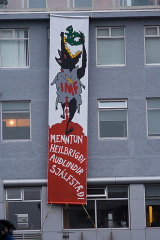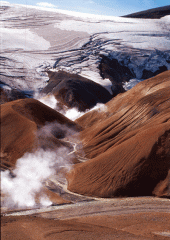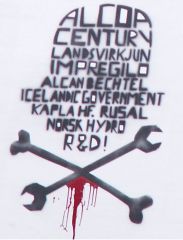'Energy Prices'
Tag Archive
Apr 14 2011
4 Comments
ALCOA, Corruption, Democracy deficit, Economics, Energy Prices, Greenland, Impregilo, Jaap Krater, Kárahnjúkar, Landsvirkjun, Miriam Rose, Workers Rights
By Miriam Rose
After many years of preparations the Greenlandic government say the final decision on Alcoa’s proposed smelter will be taken at the spring 2012 of the parliament. It is more likely, as the global history of the industry and the evidence in Greenland tells us, that the decision has in fact already been made undemocratically behind closed doors, despite the decreasing support of the Greenlandic people. In fact Alcoa and the Greenland government are so keen on passing the project that they have just hired an eighth employee at their national company Greenland Development- formed to enable the industry to go ahead. Juaaka Lyberth’s explicit remit is to influence public opinion on the smelter through the media. Greenland Development paints a rosy picture of an aluminium future for Greenland, but will their promises of prosperity come true? A comparison to Alcoa’s Fjardaal project in East Iceland suggests that many will not. Read More
May 18 2010
1 Comment
ALCOA, Corruption, Energy Prices, Kárahnjúkar, Landsvirkjun
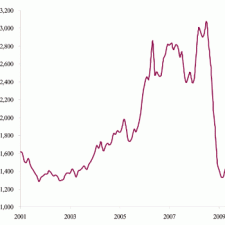 The deals on energy prices between Landsvirkjun (Iceland´s National Energy company) and the aluminum companies working in Iceland have been kept secret from the public since they got signed. The only notion the public had was a pamphlet called ”Lowest Energy Prices”, published in 1995 to lure heavy industry to the country, which like the name states, was filled with promises about cheap, greenwashed, energy. Looking at surrounding countries many estimated that the prices were close to a half of what households in Iceland pay. But after Alain Belda, Alcoa´s president, had the now famous slip of his tounge in Brazil that revealed that they were paying $15 for the MWh (megawatt hour), and RUV´s (Icelandic National Broadcasting Association) exposure of Century Aluminum´s prices earlier in the year, Landsvirkjun decided to open their books in, what they call ”an attempt to create peace around the company´s actions”. In reality they´re just blowing smoke in people faces with well chosen figures in a desperate attempt to save the companies already ruined credibility.
The deals on energy prices between Landsvirkjun (Iceland´s National Energy company) and the aluminum companies working in Iceland have been kept secret from the public since they got signed. The only notion the public had was a pamphlet called ”Lowest Energy Prices”, published in 1995 to lure heavy industry to the country, which like the name states, was filled with promises about cheap, greenwashed, energy. Looking at surrounding countries many estimated that the prices were close to a half of what households in Iceland pay. But after Alain Belda, Alcoa´s president, had the now famous slip of his tounge in Brazil that revealed that they were paying $15 for the MWh (megawatt hour), and RUV´s (Icelandic National Broadcasting Association) exposure of Century Aluminum´s prices earlier in the year, Landsvirkjun decided to open their books in, what they call ”an attempt to create peace around the company´s actions”. In reality they´re just blowing smoke in people faces with well chosen figures in a desperate attempt to save the companies already ruined credibility.
The Price Revealed
Read More
Mar 11 2010
Energy Prices, Landsvirkjun, norðurál
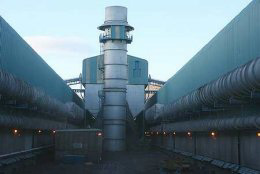 Throughout the years, Saving Iceland has been pointing out that the common household on Iceland would end up paying the bill for the aluminium factories. The secrecy that shrouds the contracts between Landsvirkjun (the National Energy Company) and the aluminium companies shouts corruption and even more voices have been questioning the deals publicly and pressing on for those numbers to be revealed.
Throughout the years, Saving Iceland has been pointing out that the common household on Iceland would end up paying the bill for the aluminium factories. The secrecy that shrouds the contracts between Landsvirkjun (the National Energy Company) and the aluminium companies shouts corruption and even more voices have been questioning the deals publicly and pressing on for those numbers to be revealed.
On the 9th of March, RUV (Icelandic National Broadcast Association) revealed a strictly confidential report the news channel has in their hands. The report, which was made for Norðurál (Century Aluminum) and foreign banks by the consulation office Hatch, shows the different costs of the industry, including the energy price.
That price of the KWh is bound to the price of each ton of aluminium, a 0.00000001% of the selling price. That means that while the price of aluminum was 1400$ a ton, Norðurál was paying 1,4 cents per KWh, making it the cheapest in Europe and leaving Landsvirkjun’s profit from the energy they sell to them dependant on the unstable aluminum price.
This price also means that Norðurál is paying a fourth of what aluminum companies in Europe are paying for their energy and on top of that, only a meager fifth of what the local population has to pay for their private energy usage.
Since the news came out, Landsvirkjun has announced they will be revealing their prices to the aluminium industry during the middle of next month.
Previously, Alain Belda, presdient of Alcoa, had revealed their energy bill in Iceland in a speech he held in Brazil. From figures he cited there people could calculate that it was the lowest energy price for an aluminium company anywhere in the world.
Keep checking this site for updates on these news.
Nov 27 2009
Economic Collapse, Economics, Energy Prices, Heavy Industry, Kárahnjúkar, Landsvirkjun
By Indriði H. Þorláksson – Economist
The economic effects of heavy industry must take into account both short and long term economic policies.
Statements put forth without reasoning sometimes obtain more significance than they merit. Two such statements that are held aloft about the building of energy plants and heavy industry are particularly dangerous.
On the one hand that they are necessary and that they might even be the way out of the crisis and on the other that the future of the Icelandic economic system is best insured by utilizing energy resources and with heavy industry. One looks to the short term and the other to the long term but both are questionable, probably wrong and even dangerous.
The economic impact of heavy industry must take into account both short and long term economic policies, In the short term, say 3-5 years the goal is to restart the economy. In the long term the goal is to promote growth in the economic system to provide citizens with the good things in life. To do so the economy has to provide the highest augmented value to the nation for its work, capital and resources.
Read More
Apr 07 2009
ALCOA, Alterra Power/Magma Energy, Andri Snaer Magnason, Century Aluminum, Corruption, Democracy deficit, Economic Collapse, Economics, Energy Prices, Geothermal Energy, Jaap Krater, Kárahnjúkar, Landsvirkjun, Reykjavik Energy, Rio Tinto Alcan, Saving Iceland
John Perkins, the author of
The Confessions of an Economic Hitman, is currently in Iceland. Perkins is here to be at the premier screening of
The Dreamland, a documentary based on Andri Snær Magnason’s book, also titled
The Dreamland. Last Sunday, Perkins was interviewed in a political TV show on RÚV (the state television station) where he spoke about the threat of Icelandic resources being sold to foreign corporations and advised Icelandic authorities not to collaborate with the International Monetary Fund (IMF).
Perkins used to work for the U.S. National Security Agency and his job included “to convince poor countries to accept enormous development loans – and to make sure that such projects were contracted to U.S. companies,” as says on the back cover of his book. Perkins states that Iceland is the first ‘developed’ country in the world to be hit by the ‘Economic Hitmen’, referring to the invasion of the aluminium industry in Iceland. Read More
Feb 09 2009
ALCOA, Bakki, Bechtel, Century Aluminum, Climate Change, Dams, Ecology, Economic Collapse, Energy Prices, Geothermal Energy, Greenwash, Hengill, hydropower, IMF, Kárahnjúkar, Landsvirkjun, Miriam Rose, Reykjavik Energy, Rio Tinto Alcan, Saving Iceland, Þjórsárver
From New Renaissance Magazine
By Miriam Rose
The economic issues currently causing mass demonstrations in Iceland have a less publicised ecological cousin, and one which the IMF has recently identified as part of the economic collapse. In 1995 the Ministry of Industry and Landsvirkjun, the national power company, began to advertise Iceland’s huge hydropower and geothermal energy potential. In a brochure titled “Lowest energy prices!!” they offered the cheapest, most hard working and healthiest labour force in the world, the cleanest air and purest water – as well as the cheapest energy and “a minimum of environmental red tape” to some of the world’s most well known polluting industries and corporations (such as Rio Tinto and Alcoa). This campaigning has led to the development of an ‘Energy Master Plan’ aimed at damming almost all of the major glacial rivers in Iceland, and exploiting all of the geothermal energy, for the power intensive aluminium industry. The loans taken by the Icelandic state to build large scale energy projects, and the minimal payback they have received from the industry, has been a considerable contributing factor to the economic crisis, while at the same time creating a European ecological crisis that is little heard of.
The Largest Wilderness in Europe
I first visited Iceland in 2006 and spent a week with activists from the environmental campaign Saving Iceland, a network of individuals from around Europe and Iceland who decry the fragmentation of Europe’s largest wilderness in favour of heavy industry. From these informed and passionate folk I learned of the 690 MW Kárahnjúkar dam complex being built in the untouched Eastern Central Highlands to power one Alcoa aluminium smelter in a small fishing village called Reydarfjörður. The dams formed the largest hydro-power complex in Europe, and were set to drown 57 km2 of beautiful and virtually unstudied wilderness, the most fertile area in the surrounding highlands. Ultimately it would affect 3% of Iceland’s landmass with soil erosion and river silt deprivation. They also explained how materials in the glacial silt transported to the oceans bonds with atmospheric CO2, sinking carbon. The damming of Iceland’s glacial rivers not only decreases food supply for fish stocks in the North Atlantic, but also negatively impacts oceanic carbon absorption, a significant climatic effect. After taking part in demonstrations at the construction site of the Alcoa smelter (being built by famous Iraq war profiteers Bechtel), I went to see the area for myself. Read More
Oct 26 2008
3 Comments
ALCOA, Century Aluminum, Economic Collapse, Economics, Energy Prices, Jaap Krater, Kárahnjúkar, Landsvirkjun, Norsk Hydro, Rio Tinto Alcan, Saving Iceland
Jaap Krater, Morgunblaðið, 26-10-2008
In times of economic crisis, it is tempting to embrace new megaprojects such as new power plants and aluminium smelters. But will this realistically improve Iceland’s economic prospects?
Prime minister Geir Haarde recently explained on Stöd 2’s chat show Mannamál that one of the main reasons for the fall of the Krona, was due to the execution of heavy industry projects: the construction of Kárahnjúkar and Alcoa’s smelter in Reyðarfjörður. If more large projects are executed, what will the cost be for the Icelandic taxpayer?
Haarde’s comments were not surprising. Before construction of Kárahnjúkar many economists predicted the negative impact on inflation, foreign debt and the exchange rate of the ISK.
Of course there is some economic benefit from new smelters, but “it is probably outweighed by the developments’ indirect impact on demand, inflation, interest rates and the ISK exchange rate,” stated a report by Glitnir in 2006 on the impact of aluminium expansion in Iceland. The report expected an increase in inflation and a depreciation of the ISK.
“Kárahnjúkar will never make a profit, and the Icelandic taxpayer may well end up subsidising Alcoa,” said the eminent economist Thorsteinn Siglaugsson after publishing another report on the profitability of the Alcoa dam in East Iceland before construction commenced. Read More
Nov 17 2006
ALCOA, Arms Industry, Energy Prices, Kárahnjúkar, Norsk Hydro, Pollution
Reykjavik newspaper ‘Bladid’ reports that Norwegian oil and aluminium company Hydro (or Norsk Hydro as they are known in Iceland) and the Icelandic government met yesterday to discuss the possibility of building a 600,000 ton smelter in Iceland within the next eight years. The company’s representatives met with Iceland’s Minister of Industries Jón Sigurdsson yesterday to present their ideas, as Bladid reports.
However, Sigurdsson denied on Icelandic State Radio that the smelter plan was ever mentioned in the talks… How shady everything has become in the little aluminium republic. Read More
Sep 22 2006
ALCOA, Andri Snaer Magnason, Democracy deficit, Ecology, Economics, Energy Prices, Greenwash, Impregilo, Kárahnjúkar, Landsvirkjun, Pollution, Repression, Saving Iceland
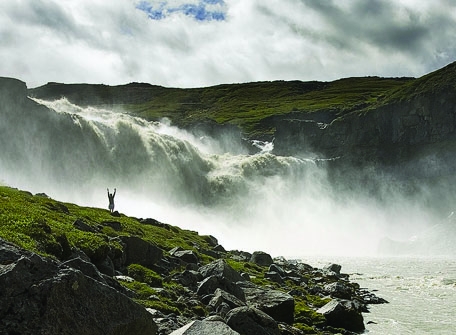
By Hanna Björk
Saying that the Kárahnjúkar dam has been controversial is an understatement. This hydro-power project, planned by Iceland’s government to dam glacial river flows and produce hydroelectric power for Alcoa’s aluminum smelter in Reyðarfjörður, east Iceland caused a debate that started a few years back. It has only been escalating. Read More
Feb 08 2006
ALCOA, Century Aluminum, Economic Collapse, Economics, Energy Prices, Heavy Industry, Kárahnjúkar, Landsvirkjun, R & D Carbon, Reykjavik Energy, Rio Tinto Alcan
Iceland Review
The required return on investment of the hydroelectric power plant at Kárahnjúkar was too low said Ágúst Gudmundsson, chairman of Bakkavör on the current affairs program Kastljós (Spotlight) Tuesday, according to the Icelandic Broadcasting Service, RÚV. “I would have preferred that the money had been spent in a different way,” he said. Read More
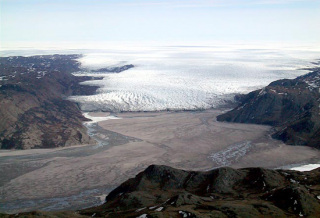
 The deals on energy prices between Landsvirkjun (Iceland´s National Energy company) and the aluminum companies working in Iceland have been kept secret from the public since they got signed. The only notion the public had was a pamphlet called ”Lowest Energy Prices”, published in 1995 to lure heavy industry to the country, which like the name states, was filled with promises about cheap, greenwashed, energy. Looking at surrounding countries many estimated that the prices were close to a half of what households in Iceland pay. But after Alain Belda, Alcoa´s president, had the now famous slip of his tounge in Brazil that revealed that they were paying $15 for the MWh (megawatt hour), and RUV´s (Icelandic National Broadcasting Association) exposure of Century Aluminum´s prices earlier in the year, Landsvirkjun decided to open their books in, what they call ”an attempt to create peace around the company´s actions”. In reality they´re just blowing smoke in people faces with well chosen figures in a desperate attempt to save the companies already ruined credibility.
The deals on energy prices between Landsvirkjun (Iceland´s National Energy company) and the aluminum companies working in Iceland have been kept secret from the public since they got signed. The only notion the public had was a pamphlet called ”Lowest Energy Prices”, published in 1995 to lure heavy industry to the country, which like the name states, was filled with promises about cheap, greenwashed, energy. Looking at surrounding countries many estimated that the prices were close to a half of what households in Iceland pay. But after Alain Belda, Alcoa´s president, had the now famous slip of his tounge in Brazil that revealed that they were paying $15 for the MWh (megawatt hour), and RUV´s (Icelandic National Broadcasting Association) exposure of Century Aluminum´s prices earlier in the year, Landsvirkjun decided to open their books in, what they call ”an attempt to create peace around the company´s actions”. In reality they´re just blowing smoke in people faces with well chosen figures in a desperate attempt to save the companies already ruined credibility. Throughout the years, Saving Iceland has been pointing out that the common household on Iceland would end up paying the bill for the aluminium factories. The secrecy that shrouds the contracts between Landsvirkjun (the National Energy Company) and the aluminium companies shouts corruption and even more voices have been questioning the deals publicly and pressing on for those numbers to be revealed.
Throughout the years, Saving Iceland has been pointing out that the common household on Iceland would end up paying the bill for the aluminium factories. The secrecy that shrouds the contracts between Landsvirkjun (the National Energy Company) and the aluminium companies shouts corruption and even more voices have been questioning the deals publicly and pressing on for those numbers to be revealed.
